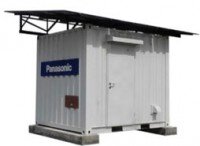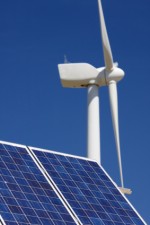Australia is one of the world’s leaders when it comes to rooftop solar power. Residential solar power has taken off in Australia in a way not seen in many other countries. What are some of the reasons it has been such a hit among Australian homeowners?
 1. Solar power saves homeowners money. This is clearly the main driver behind the huge wave of solar panel installations in Australia. While it’s true that most Australians would like to green up their electricity supply and become more energy independent, few are likely to do so unless the economics make sense. First it was generous solar feed-in tariff incentives that convinced ordinary households to get on board with solar–instigating a historic boom in installation numbers. Now, however, even with state-backed incentives pared back around the country, homes have realised that solar PV systems are still worth the investment.
1. Solar power saves homeowners money. This is clearly the main driver behind the huge wave of solar panel installations in Australia. While it’s true that most Australians would like to green up their electricity supply and become more energy independent, few are likely to do so unless the economics make sense. First it was generous solar feed-in tariff incentives that convinced ordinary households to get on board with solar–instigating a historic boom in installation numbers. Now, however, even with state-backed incentives pared back around the country, homes have realised that solar PV systems are still worth the investment.
2. The Renewable Energy Target. Although it may not be around much longer in its current form if the government has its way, for the time being the RET is doing the heavy lifting for ordinary households that want to see their electricity bills reduced with solar. On average the RET knocks 60¢-70¢ off the cost of each watt of installed capacity for systems under 100kW (most residential systems are 10kW or less). For a 5kW solar system in Brisbane, for example, this means an incentive that works out to around $3000.
3. Solar system prices have fallen significantly. The cost of having a solar PV system installed has halved in the last 5 years, and promises to remain an affordable option for homes around the country and the world into the future. Thanks to falling PV system prices, self-produced solar energy is cheaper over the 25 year lifetime of a solar system than power purchased from the grid–pretty much everywhere in Australia. In fact, a solar system, properly used (that is, with the home in question consuming as much as the solar power as possible directly), a solar system will pay for itself in energy saving in as few as 4 years in some cases. That means nearly 21 years of fuel-free electricity.
Australian solar PV system prices from the Solar Choice database for May 2014. Multiply system size by 1000 and the price to get full system prices.
4. The appeal of greater energy independence. The climb in retail electricity rates in recent years has led to ire amongst households, businesses and pretty much anyone with a power bill to pay. Solar power has been one of the most popular ways to fight back against this trend. Rising with electricity prices has been resentment directed at a number of sources: some people choose to take it out on utilities, some to take it out on the government, and some have even chosen to take it out on solar power & ‘green schemes’. For those who don’t believe solar is part of the problem (and in the long run, we know that it’s actually part of the solution), getting a PV system installed is a clear choice–whether they’re doing so to reduce their reliance on the grid or with the aim of becoming completely independent of it. Add an energy storage system to the mix, and even grid-connected systems can allow their owners to feel as if they’ve gone off-grid.

Panasonic’s energy storage solution: 1 of a number similar systems becoming available throughout the world.
5. Australia is blessed with lots of sunshine. On average, 1kW of solar capacity installed in Australia (using Brisbane as a base case) will produce 2x more power per year than an equivalent system installed in Germany or the UK. Despite this, Germany  has one of the highest solar PV penetration rates in the world, while the UK–whose reputation for gloomy weather hardly needs to be mentioned–is on track to outstrip Australia in terms of newly installed solar capacity this year. If solar works in Germany and the UK, why can’t it work in Australia? The amount of sun this country sees (yes, even Tasmania) is one of the underlying reasons that solar makes so much sense here, bolstering the business case for going solar (fewer panels required to produce the same amount of electricity) and instilling in ordinary folks the confidence to believe they can rely on the sun to provide them with most of their power.
has one of the highest solar PV penetration rates in the world, while the UK–whose reputation for gloomy weather hardly needs to be mentioned–is on track to outstrip Australia in terms of newly installed solar capacity this year. If solar works in Germany and the UK, why can’t it work in Australia? The amount of sun this country sees (yes, even Tasmania) is one of the underlying reasons that solar makes so much sense here, bolstering the business case for going solar (fewer panels required to produce the same amount of electricity) and instilling in ordinary folks the confidence to believe they can rely on the sun to provide them with most of their power.
 6. It’s clean energy. Unlike Australia’s main fuel for electricity–coal–solar panels produce no emissions in generating power. One of the myths that floats around about solar panels is that they use more energy to manufacture than they will ever generate in their functional lifetimes–this is patently false–and energy produced by a solar system is far less carbon intensive than energy from coal (which, by the way, can never pay off its ‘carbon debt’). After making up for any initial carbon debt (which wouldn’t exist in the first place if components were to be manufactured at a plant that uses 100% renewable energy) in the first 1-3 years of operation, a system will continue to produce power for up to 30 years. As for other pollutants: While ‘less bad’ is certainly not as compelling an argument as ‘more good’, it also eases the conscience a little to know that, per kilowatt-hour of power produced over their lifetime, solar panels will result in “90 to 300 times” fewer toxic emissions than an equivalent amount of power coming from coal. And when the end of a system’s service life comes around, depending on the panel manufacturer, panels can either be recycled (most likely through the PV Cycle program) or possibly ‘down-cycled’ and used in other applications, as they do continue producing electricity (albeit less efficiently) at that point.
6. It’s clean energy. Unlike Australia’s main fuel for electricity–coal–solar panels produce no emissions in generating power. One of the myths that floats around about solar panels is that they use more energy to manufacture than they will ever generate in their functional lifetimes–this is patently false–and energy produced by a solar system is far less carbon intensive than energy from coal (which, by the way, can never pay off its ‘carbon debt’). After making up for any initial carbon debt (which wouldn’t exist in the first place if components were to be manufactured at a plant that uses 100% renewable energy) in the first 1-3 years of operation, a system will continue to produce power for up to 30 years. As for other pollutants: While ‘less bad’ is certainly not as compelling an argument as ‘more good’, it also eases the conscience a little to know that, per kilowatt-hour of power produced over their lifetime, solar panels will result in “90 to 300 times” fewer toxic emissions than an equivalent amount of power coming from coal. And when the end of a system’s service life comes around, depending on the panel manufacturer, panels can either be recycled (most likely through the PV Cycle program) or possibly ‘down-cycled’ and used in other applications, as they do continue producing electricity (albeit less efficiently) at that point.
7. Solar power is cool. The concept of harnessing the sun’s energy has been around since historic times, with evidence of its use from as far back as 4000B.C. Even Socrates talked about its usage as a matter of course. Depending on the era, the location and the scarcity of other fuels, the sun’s rays have long been used to do many of the jobs which we now routinely rely on fossil fuels to do–including heating, cooling, and lighting. There aren’t many people who would argue that it wouldn’t be great to be able to produce clean, cheap, usable energy from the sun as opposed to digging up ancient trees (themselves essentially ancient solar energy) to burn burn for the same purpose. The fact that it is possible to run modern-day appliances affordably using devices that capture the sun’s rays and turn them into electricity is pretty awe-inspiring when we step back and think about it, much as the first electrically-powered devices must have seemed like amazing feats of magic to the generation that first witnessed them.
© 2014 Solar Choice Pty Ltd
- Solar Power Wagga Wagga, NSW – Compare outputs, returns and installers - 13 March, 2025
- Monocrystalline vs Polycrystalline Solar Panels: Busting Myths - 11 November, 2024
- Solar Hot Water System: Everything You Need to Know - 27 February, 2024
